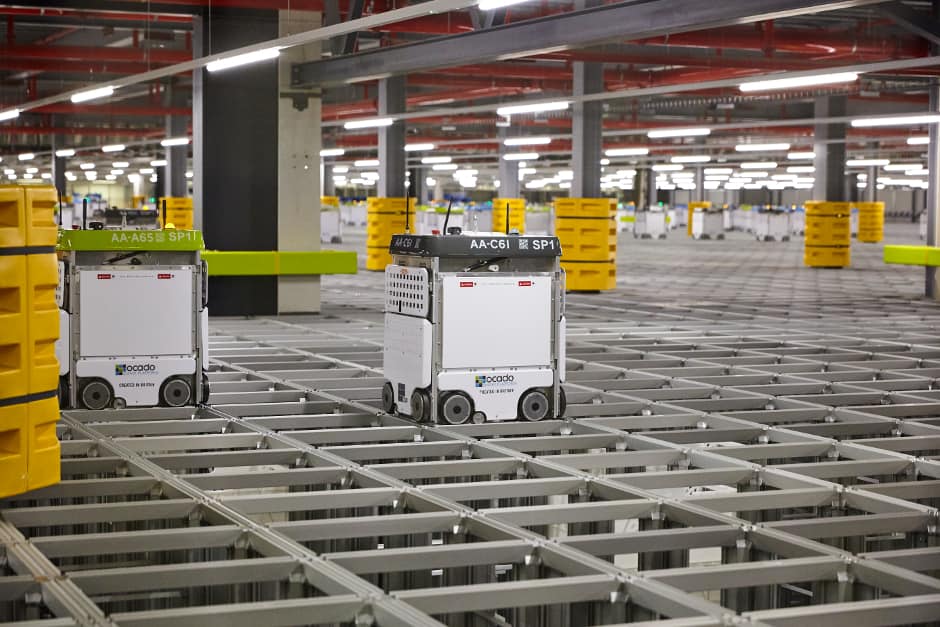Robot swarm runs hive of online grocery activity
A warehouse in Hampshire is home to up to 1100 robots that can work simultaneously to satisfy the voracious eating habits of humans.

The 240,000 sq ft facility is situated on Walworth Business Park in Andover and is called a customer fulfilment centre (CFC) by Ocado, the online grocer targeting relentless growth through its application of automation and technology.
The Andover CFC provides consumers with a choice of 45,000 products and is set up to handle the picking of 3.5 million items to fulfil up to 65,000 orders a week.
To make this possible, Ocado has created a 4D hive - three physical dimensions plus a complex communications network - with battery-operated robots at the summit. They manoeuvre over a grid at a top speed of 4m/s - and to within 5mm of one another - to pull crates into a cavity within them. They then move around the grid to lower crates to humans assembling orders for customers who’ve signed up to Ocado’s home delivery service. The crates are then fed back into the system and the process continues on a 24/7 basis.
Register now to continue reading
Thanks for visiting The Engineer. You’ve now reached your monthly limit of premium content. Register for free to unlock unlimited access to all of our premium content, as well as the latest technology news, industry opinion and special reports.
Benefits of registering
-
In-depth insights and coverage of key emerging trends
-
Unrestricted access to special reports throughout the year
-
Daily technology news delivered straight to your inbox










Water Sector Talent Exodus Could Cripple The Sector
Maybe if things are essential for the running of a country and we want to pay a fair price we should be running these utilities on a not for profit...